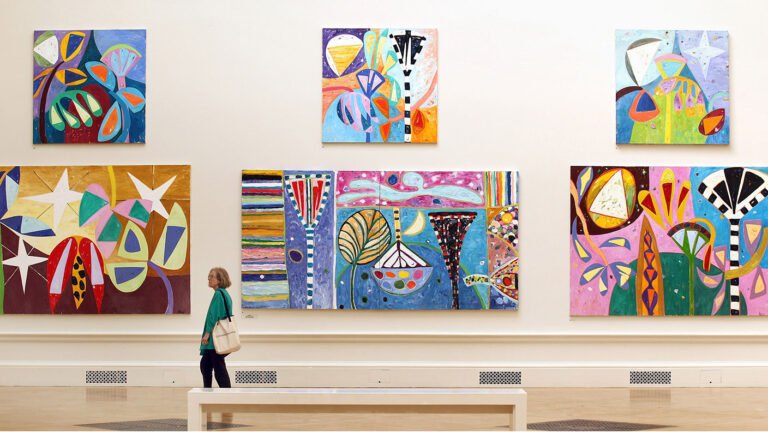I have just bought an original Vernon Ward – a large and beautiful oil painting of a vase of roses completed in the 1930s or 1940s.
How can you possibly afford an original Ward on a journalist’s salary, I hear you say? Or perhaps I hear you say nothing of the sort. After all, I suspect you haven’t the faintest idea who Vernon Ward is. He was one of the most recognisable English painters of the second half of the 20th century. He painted harbours, swans, flowers, birds and the odd slightly soppy Edwardian drawing room scene.
Not everyone could afford an original Vernon, but everyone could still enjoy him; his paintings were reproduced in huge volume. Think postcards, trays, jigsaw puzzles and thousands upon thousands of high-quality prints. Even now you’d be hard pushed to attend a house clearance that did not involve a Vernon Ward print.
Subscribe to MoneyWeek
Subscribe to MoneyWeek today and get your first six magazine issues absolutely FREE
Get 6 issues free
Sign up to Money Morning
Don’t miss the latest investment and personal finances news, market analysis, plus money-saving tips with our free twice-daily newsletter
Don’t miss the latest investment and personal finances news, market analysis, plus money-saving tips with our free twice-daily newsletter
His star rose as he aged (art critics being the relentless snobs they are, he was tainted by his commercialism in mid-career) and by the time he was being shown in a top gallery his health was deteriorating.
Anyone watching the market at that point might have thought that was the time to buy. A fabulous, extremely popular artist on the cusp of not just fame, but establishment acceptance, in ill- health?
Well, hello supply and demand. They would have thought wrong. My new painting cost me £250 — and I might have overpaid. As you read this, one of Ward’s sweet swan paintings is being auctioned. The estimate is £400-£500. They’ll be lucky. And the prints? There are 138 for sale on Ebay at the moment and many more elsewhere.
Vernon is popular with the Etsy sellers who turn house clearance odds and ends into “vintage” treasure. I am toying with one of his flying duck prints embedded in a “vintage handled serving tray” (£10) and my favourite of his prints (“Polruan Landing”) safely housed in a “oval frame convex glass bubble” (£19).
I’d have the latter hanging at home by now if I could find a courier willing to bring a fragile glass thing to me from Coventry for less than its purchase price.
The point here is that if you had bought into Vernon as a long-term art investment, based on his fame and momentum, it will not have worked.
The art market has become increasingly financialised
You will hear a lot about how investing in art is a great way to diversify your investments and to raise your long-term returns. London’s Maddox Advisory suggests that “blue-chip art” has outperformed the FTSE 100 by 402% over the past 20 years (an annualised return of 8.43%).
Masterworks, a US art investment firm, reckons that between 1995 and 2020 contemporary art prices rose by 14% a year. That’s more than the S&P 500, more than global equities, more than houses and more than gold.
No wonder everyone wants in. All art investment websites like to point to a Deloitte report which found that 85% of wealth managers suggest art should be part of a balanced portfolio. This makes a lot of sense when you run your eye down another Deloitte report pointing out the potential revenue streams available to those that facilitate it (think 10% of the transaction value for representing a client at auction).
And no wonder that, with everyone wanting in, the market has become increasingly financialised. Back to Masterworks. This is not just an art investment company, it is a fractional art investment company. It says it has compiled the “most complete database of paintings that have been resold throughout history”.
That allows it, the website tells us, to identify which artists are gaining momentum. It then buys work by those artists, creates shares in each piece and flogs those shares to investors, who can then trade them in a secondary market.
Sounds good, doesn’t it? After all, if fractional momentum investing works in the stock market, why shouldn’t it work in the art market? Or indeed the sneaker market? Become a client of Rares, an investing platform, and you can buy a share of a shoe (sorry, “investment-grade sneaker”) which you can then trade with users of the same platform.
There’s a problem with all this, of course. It is the idea that you can create an art price index of any kind in the first place (let alone a sneaker index). Art price indices only include pictures that have actually traded publicly at auction. This is a small fraction of the whole, but mostly the part which is rising anyway, since we are more likely to sell assets that have gone up in value than those that have gone down.
Art indices, then, are less overall price indices than momentum measurers — and the majority of art purchases end up being, at best, Vernons and at worst, actual rubbish. It’s also impossible to say what any collectible is actually worth. In the end a genuine asset has a residual value. The price may be bid up way beyond that, but the value remains the same.
How can we value art as an investment?
The value of an equity is the sum of the dividends it will eventually pay you or someone else; the value of a sovereign bond is about the coupon it pays; and that of a house its potential rental income. They represent business, government and land respectively.
Art, sneakers and, for that matter, NFTs (non-fungible tokens) have no potential income stream for us to value them on. Successful ones have done nothing more than won a short to medium-term popularity contest (with the exception, of course, of the very few pieces of art that have won a very long-term popularity contest).
They represent momentum, buzz and FOMO (fear of missing out). Note a survey from consultancy Oxford Risk suggesting that 36% of those who have bought cryptocurrencies in the last few years have done so despite knowing almost nothing about them.
These drivers can be intense. They can also lose you an awful lot of money. Momentum, buzz and FOMO can vanish as fast as they come – and when they do, equity investors will still have something, but fractional sneaker investors will not.
My advice? To the sensible, I would say if you are going to buy sneakers or artworks, at least skip the financialised version and buy a whole one (preferably two if they are shoes). Then at least you can look at it at home – which gives it some residual leisure value, at least.
To the not-so sensible I would say, if you want something pretty undervalued at the moment, I can do you a fractional share of an NFT of an original Vernon. Just email.
• This article was first published in the Financial Times

